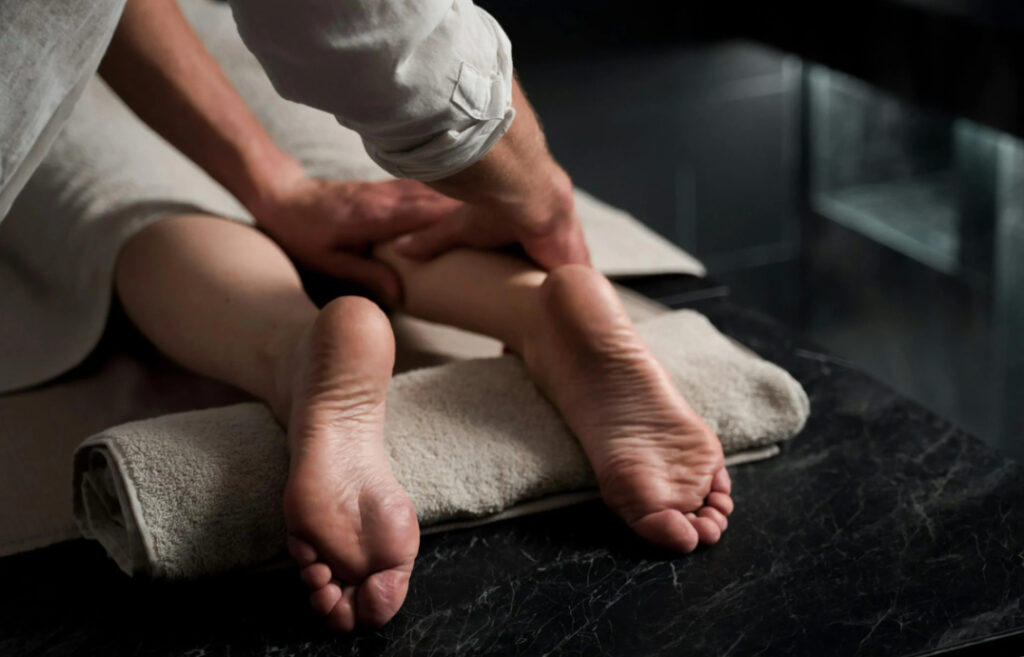Around 7 million Americans grapple with scoliosis, a condition marked by an abnormal curvature of the spine. From barely noticeable to severe, its symptoms can impose considerable discomfort on individuals’ daily lives. Yet, for those ineligible for surgery, exploring alternative treatment paths becomes crucial.
Seeking Relief: How to Explore Scoliosis Chiropractic Care?
Traditionally, individuals seek relief through avenues like physical therapy, orthopedics, or primary care. However, an increasing number are turning to chiropractic care for its potential benefits. Delving into the biomechanics of scoliosis sheds light on the rationale behind this shift.
Within a healthy spine, vertebrae align neatly with interposing cartilage discs, facilitating flexibility and cushioning during movement. In contrast, scoliosis manifests as an abnormal lateral curvature, prompting vertebrae to tilt sideways. This deviation can result from various factors, including muscular dystrophy or age-related degeneration.
Even a mild curvature can induce significant back pain. As depicted in X-ray imagery, the sideways curve compresses spinal discs, leading to vertebrae friction and potential bone spur formation. Furthermore, this misalignment imposes strain on joints and nerve impingement, exacerbating discomfort.
The Widespread Impact of Scoliosis Pain
The repercussions of scoliosis extend beyond the spinal column to encompass muscles and tendons, analogous to a metal spring connected to rubber bands. This spinal curvature causes chronic back pain, muscle spasms, and trigger points, often radiating pain to distant body regions. Left untreated, worsening curvatures can impede lung function and disrupt digestion. Here’s a detailed breakdown:
- Spinal Column and Beyond: Scoliosis affects not only the spinal column but also the muscles and tendons surrounding it. The condition can lead to significant structural and functional issues;
- Analogous Impact: The effect of scoliosis on the body can be likened to a metal spring (the spine) connected to rubber bands (muscles and tendons), illustrating how the curvature impacts the body’s mechanics and pain levels;
- Chronic Back Pain: One of the most common repercussions of scoliosis is chronic back pain, which can severely affect daily activities and quality of life;
- Muscle Spasms: The curvature of the spine can lead to muscle spasms, which are sudden, involuntary contractions that are often painful;
- Trigger Points: These are sensitive areas in the muscle or connective tissue that become painful, especially when compressed. Scoliosis can lead to the development of these painful trigger points;
- Radiating Pain: The pain from scoliosis can radiate, or spread, to distant body regions, not just confined to the back or spinal area;
- Impaired Lung Function: As curvatures worsen without treatment, they can start to impede lung function, making breathing more difficult and less efficient;
- Disrupted Digestion: Scoliosis can also disrupt normal digestion, leading to gastrointestinal issues due to the altered body mechanics and pressure on internal organs;
- Importance of Treatment: Addressing scoliosis early on is crucial to prevent these repercussions from worsening. Untreated scoliosis can lead to progressive and potentially irreversible damage to the spine, muscles, tendons, and internal organs.
Chiropractic Care: A Holistic Approach to Symptom Management
While surgical intervention remains the sole method to straighten severe scoliotic curves, chiropractic care focuses on symptom management and preventing curve progression. Embracing a holistic ethos, chiropractors aim to restore spinal and joint alignment, fostering the body’s self-healing mechanisms. Studies attest to chiropractic’s efficacy in reducing pain and improving functional outcomes among scoliosis patients.
Through spinal adjustments and flexion distraction techniques, chiropractors enhance flexibility, alleviate pain, and optimize range of motion. This, in turn, complements orthopedic exercises aimed at strengthening spinal support musculature.
The Therapeutic Role of Massage in Scoliosis Management
Massage therapy emerges as a valuable adjunctive treatment in alleviating muscle tension and discomfort associated with scoliosis. By employing diverse modalities such as Cranial-Sacral and Deep Tissue massages, therapists target trigger points, enhance circulation, and induce overall relaxation, augmenting the efficacy of chiropractic interventions.
A Path to Pain Relief: Embracing Chiropractic and Massage
In conclusion, navigating the complexities of scoliosis entails a multifaceted approach. Chiropractic care and massage therapy synergize with conventional treatment modalities, offering a drug-free avenue towards pain relief and enhanced well-being. By addressing the underlying biomechanical challenges of scoliosis, these therapies empower individuals to reclaim control over their health and quality of life.
FAQs:
Chiropractic care primarily focuses on symptom management and preventing the progression of scoliotic curves rather than straightening the spine entirely. While studies indicate improvements in curvature, pain reduction, and enhanced mobility, complete realignment typically necessitates surgical intervention, particularly in cases of severe curvature.
Chiropractic care for scoliosis is generally considered safe when administered by a qualified practitioner. However, individuals with certain medical conditions or severe spinal instability may be at risk of adverse effects. It’s crucial to undergo a comprehensive evaluation and discuss potential risks with your chiropractor before initiating treatment.
Massage therapy serves as a complementary modality to chiropractic care by targeting muscle tension, trigger points, and overall relaxation. By alleviating muscular imbalances and promoting circulation, massage therapy enhances the effectiveness of chiropractic adjustments, facilitating pain relief and improved functional outcomes for individuals with scoliosis.



